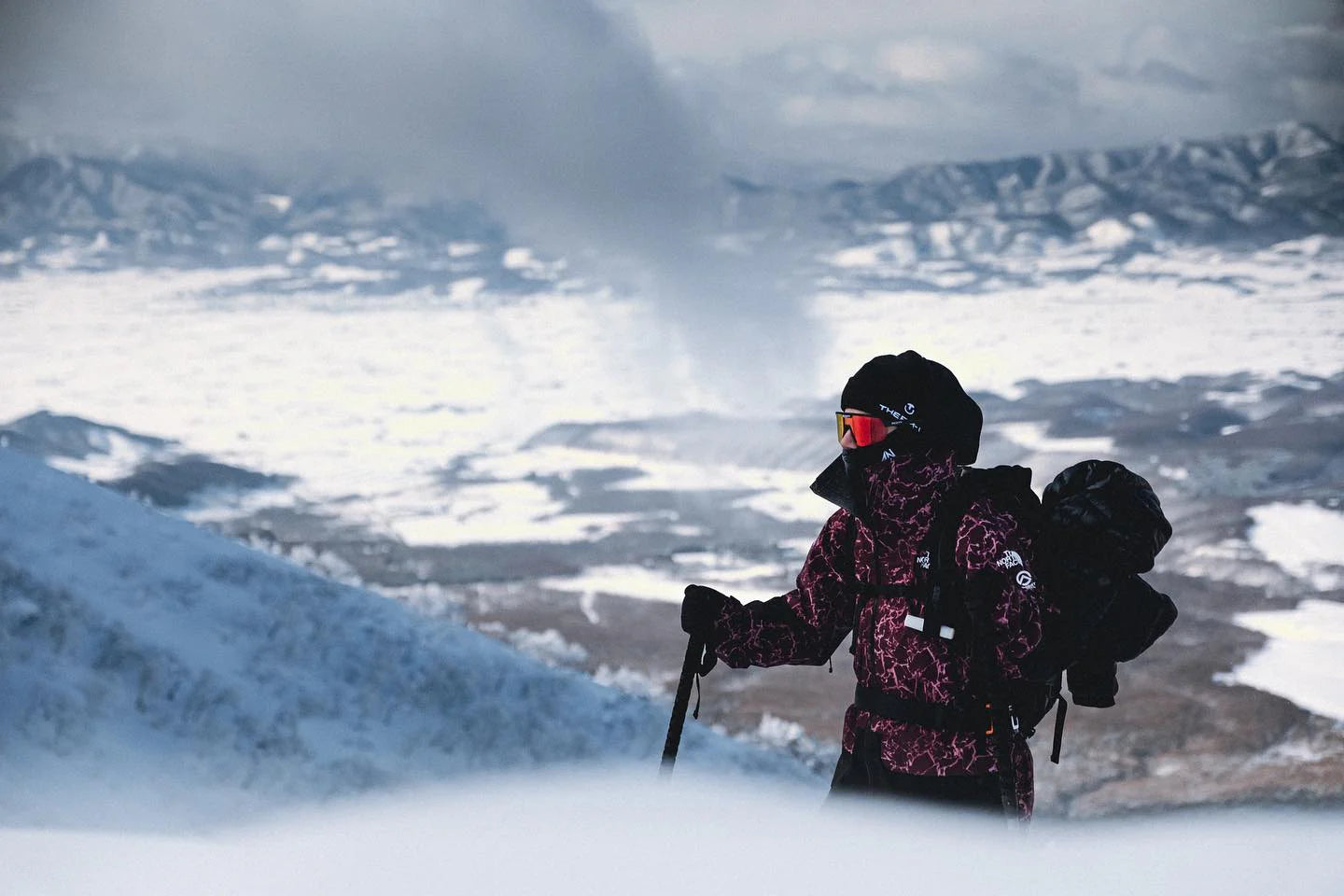What is Thermoregulation?
What is Thermoregulation ?
Humans are remarkable beings—endowed with an exceptional ability to withstand extreme environments. Whether it's the frigid Siberian tundra, the scorching Arabian desert, the humid Amazon rainforest, or the towering peaks of the Himalayas, the human body adapts.
This resilience is made possible by natural mechanisms that help us acclimate and self-regulate. It's through these processes that our internal climate—the body’s temperature balance—is maintained. No matter the external conditions, our bodies strive to stay at a stable temperature. In scientific terms, humans are “warm-blooded,” or homeothermic: we regulate our internal body temperature around an average of 98.6°F (37°C).
Why is this important? Because 98.6°F is the temperature at which our muscles and metabolism function most efficiently. Our internal temperature naturally fluctuates—from about 96.98°F (36.1°C) during the night when the body is at rest, to around 100.04°F (37.8°C) in the late afternoon when activity peaks.
Unlike us, certain animals like lizards are poikilothermic, meaning their body temperature mirrors that of their surroundings. This highlights why it's so essential for humans to protect their bodies—especially the extremities—from temperature changes.
That’s where Therm-ic products come in: helping you maintain a stable body temperature, whatever the weather or conditions.
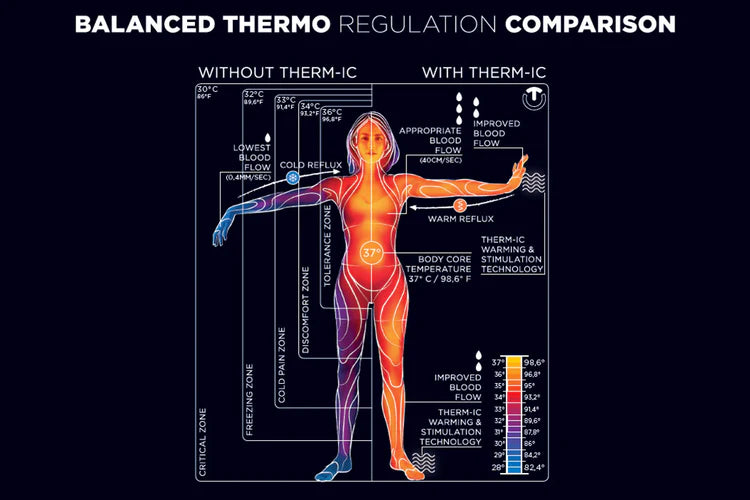
Balanced Thermoregulation
Our bodies function best at a core temperature of 98.6°F (37°C), as long as blood circulation remains at a normal, healthy rate. Blood flow varies depending on both temperature and pressure. It moves fastest in the core of the body—at approximately 15.75 inches per second (40 cm/sec)—and slows dramatically, up to 1,000 times slower (about 0.016 inches per second or 0.4 mm/sec), by the time it reaches the most distant extremities, like the fingers and toes, before returning to the core.
At this point, blood flow is at its slowest, coldest, and requires extra energy just to keep moving. This strain can lead to sensations of cold discomfort, and in more extreme cases, even hypothermia.
When the outside temperature drops below 32°F (0°C), the temperature in the hands and feet can fall to as low as 82.4°F (28°C).
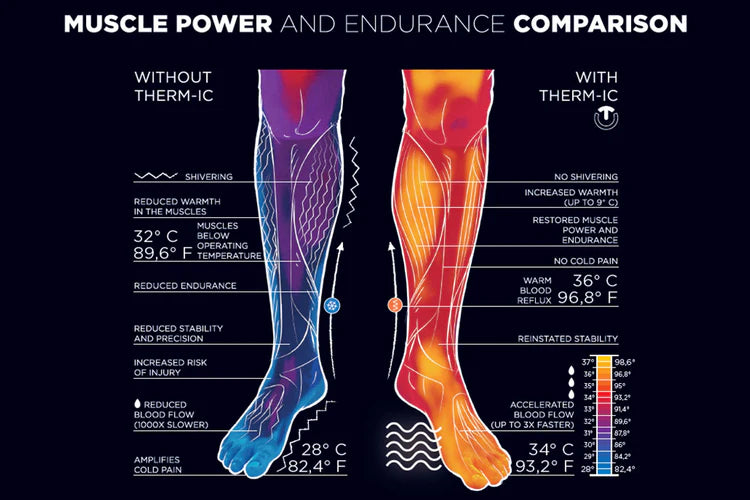
Muscle Power and Endurance Comparison
As much as 75% of our muscle power can be lost to the cold. When the brain detects cold-related pain, it redirects over 90% of available energy to warm the affected muscles. This shift in energy use leads to a significant drop in both muscle strength and endurance—and often triggers shivering as the body struggles to generate warmth.
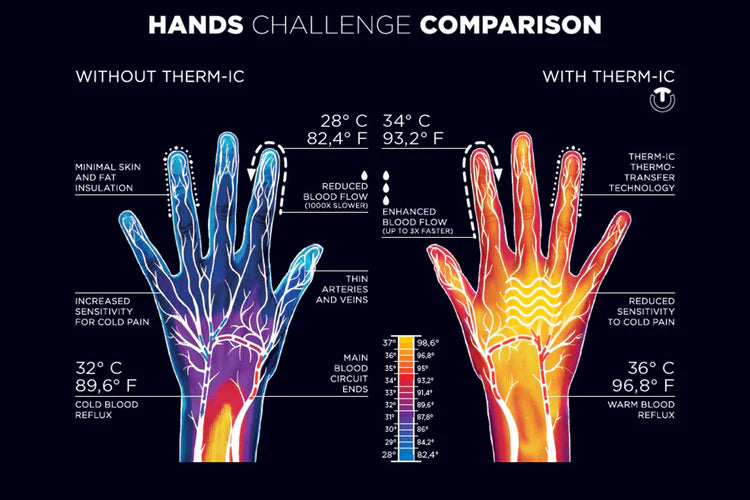
Hand Challenge Comparison
The skin is a remarkably complex organ, containing about 93% cold sensors and only 7% warm sensors. It’s made up of two closely connected layers: the outer epidermis and the inner dermis, both of which rest on a thin layer of brown fat that acts as natural insulation.
For the hands to function properly, adequate blood flow is essential. However, in the hands and feet—especially in women—the surface area of the skin is disproportionately large compared to the overall volume and the thickness of the insulating fat layer. This imbalance results in greater sensitivity to cold and slows blood circulation, making the extremities more vulnerable to temperature drops.
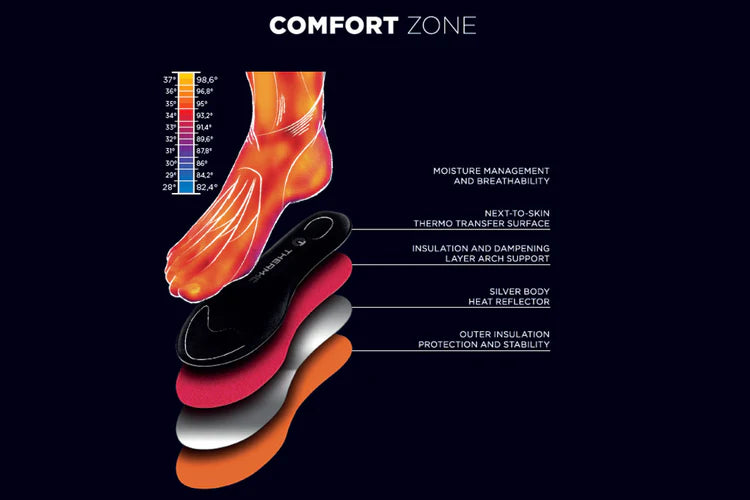
Comfort Zone
It’s essential to protect your hands and feet under all conditions. When the body’s natural insulation isn’t enough, external insulation becomes necessary to maintain thermal balance and overall well-being.
The goal is to keep your body within its ideal comfort zone—a core temperature of 98.6°F (37°C)—where physiological performance and comfort are optimized.
